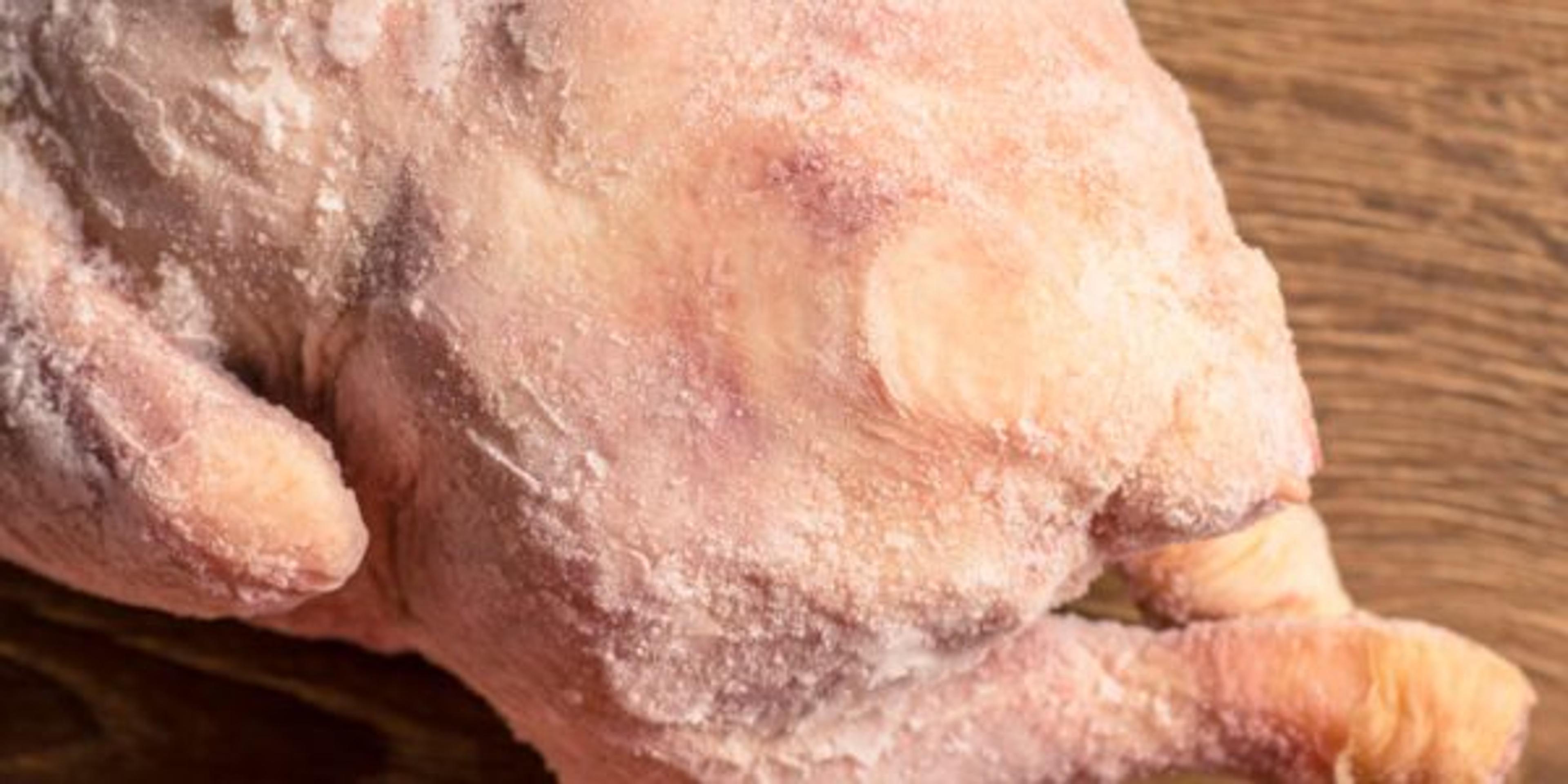How to Safely Thaw a Frozen Turkey
Shandra Martinez
| 3 min read

Thanksgiving dinner is one of the biggest celebratory meals of the year in the United States. Family and friends gather around tables often crowded with food. Before everyone can sit down, there’s lots of meal prep and planning. Stuffing, potatoes and other side dishes have to be ready at the same time as the main dish, usually a roasted turkey. But if that turkey is still half-frozen on Thanksgiving morning and not ready to roast, it can throw off the timing of the whole holiday meal. Let’s look at how to safely thaw a frozen turkey so you can keep your Thanksgiving dinner on track.
If you’re dishing up slices of turkey on Thanksgiving, you’re in good company. The National Turkey Federation estimates 88% of people in the United States will be eating turkey this holiday season. That equals about 46 million turkeys. A lot of these are sold as frozen turkeys at grocery stores across the country. While some people prefer fresh turkeys or pre-cut turkey portions, frozen turkeys are usually more economical and can be purchased ahead of the holiday and stored in the freezer.
Preparing frozen turkeys can get dicey if you don’t leave enough time for proper, safe thawing before it’s time to cook the bird. There are really only a few safe ways to thaw a frozen turkey, but that doesn’t stop some people from trying unsafe methods. The reason thawing a frozen turkey has to be done a specific way is that other methods of thawing can result in dangerous bacteria growing on a thawed or partially-thawed bird. This bacteria can make the people who eat it get sick.
Don’t thaw a turkey this way. First, let’s look at ways you should never thaw a turkey, according to food safety experts in the U.S. Department of Agriculture (USDA).
- Don’t leave a turkey to thaw at room temperature on the kitchen counter.
- Don’t leave a turkey to thaw in a garage or sitting on the porch.
- Don’t thaw a turkey by leaving it out in a plastic grocery bag or in a brown paper bag.
- Don’t thaw a turkey in a dishwasher .
Do thaw a turkey using these safe methods. There are three safe ways to defrost a frozen turkey and make sure it’s ready to cook on time for Thanksgiving dinner. They are:
In a refrigerator: This is the best way to thaw a turkey, according to the USDA. It takes the most time, but it also allows a turkey to defrost safely. Place the turkey breast-side-up on a shelf in the refrigerator. Keep the turkey’s wrappings on. Plan on a frozen turkey taking one day to thaw for every four pounds. So, for example, a 12-pound frozen turkey would take three days to thaw completely in the refrigerator. Once thawed, a turkey can remain in the fridge for two to four days before cooking.
In cold water: Completely submerge a frozen turkey, still in its wrappings, in cold water. Change the water every half hour. You can estimate thawing time at 30 minutes per pound. So a 12-pound frozen turkey would take about six hours to thaw. Once it’s thawed, cook it immediately.
In a microwave: First, make sure the turkey can fit easily inside the microwave. The USDA recommends checking the microwave owner’s manual for the suggested power level and minutes per pound needed to defrost the bird. If there are no specific recommendations, try defrosting at six minutes per pound. Remove the turkey’s wrappings. Put it inside a microwave-safe dish. Rotate the turkey and flip it over during the thawing process.
Related:
Photo credit: Getty Images





